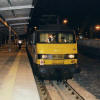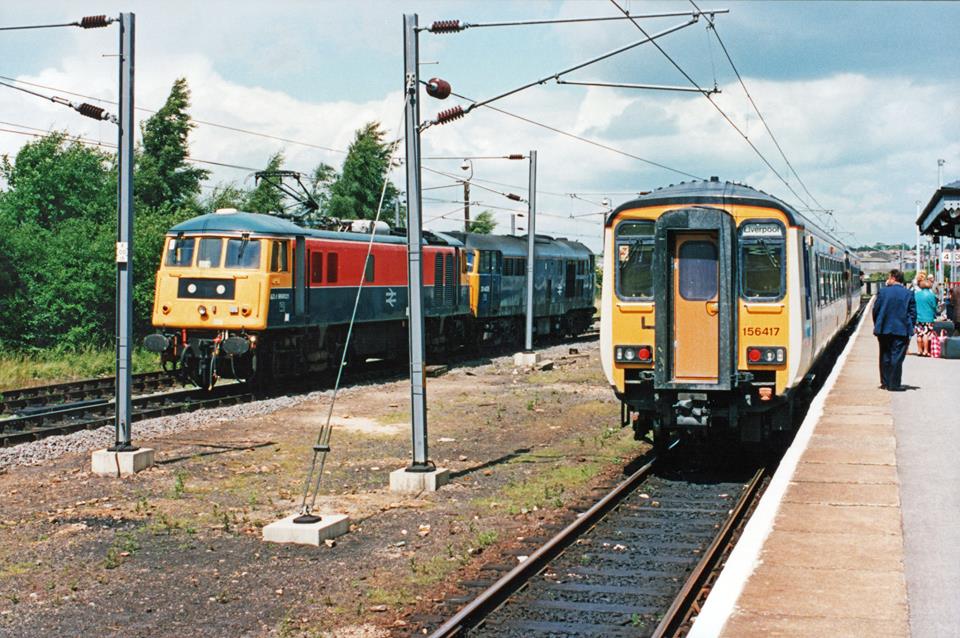During the late
90s and early 2000 various test trains were operated over electrified lines in order to
give a steady current load to enable the effect of the return traction currents on the
infrastructure to be assessed.
Two class 90 locos were usually utilised but
the early tests were conducted with class 91 locos.
The methodology was based on the ‘speed
set’ controls fitted to these locomotives, which allowed power to be
applied to reach the set speed and automatically applied the rheostatic
brake should that speed be exceeded.
The two locos were coupled together
mechanically but not electrically. With a driver in the leading cab of each
loco the rearmost speed control was set to 10 mile/h. The locos would then
move off together and after the speed exceeded 10 mile/h the rearmost loco
would enter its braking mode and apply rheostatic brake thereby presenting a
‘load’ to the leading locomotive. Running at a pre-determined speed of
approx 40 mile/h allowed the leading loco to draw around 100A from the
overhead line.
It was dependant upon a reasonably level
track and a test site with sufficient distance to maintain 40 mile/h for a
while. We did these tests in a T (iii) possession and over anything up to
twenty miles. We had an open line to all parties undertaking the lineside
monitoring and everything was synchronised. Various lineside points of
interest were listed with their location (miles/chains) such that as the
train proceeded the test engineer on board could relay to the testers in the
sub stations when the train passed these places - booster transformers,
mid-point anchors etc. Biggest problem was that the tests were usually done
at night so spotting details like this was difficult. To help us see
in the dark we had a couple of portable headlights which we mounted on the
front lamp brackets of the leading loco.. We also had a powerful hand held
torch in the cab - occasionally the local testers would place reflective
tape on certain structures before the job was carried out and these were a
boon.
Amongst the sites where testing was
undertaken were the
Heathrow Express lines - (a class 90 at Terminal 4!), Liverpool Street to
Southend, the ECML near Stevenage, the Hertford Loop, Port Glasgow to Wemyss Bay,
WCML in Scotland, Newcastle Tyne Yard area. More recently the Manchester South re-signalling scheme and the
Crewe to Kidsgrove electrification project were added to the list as were
the east side lines at St Pancras International now used by South East
Trains .










